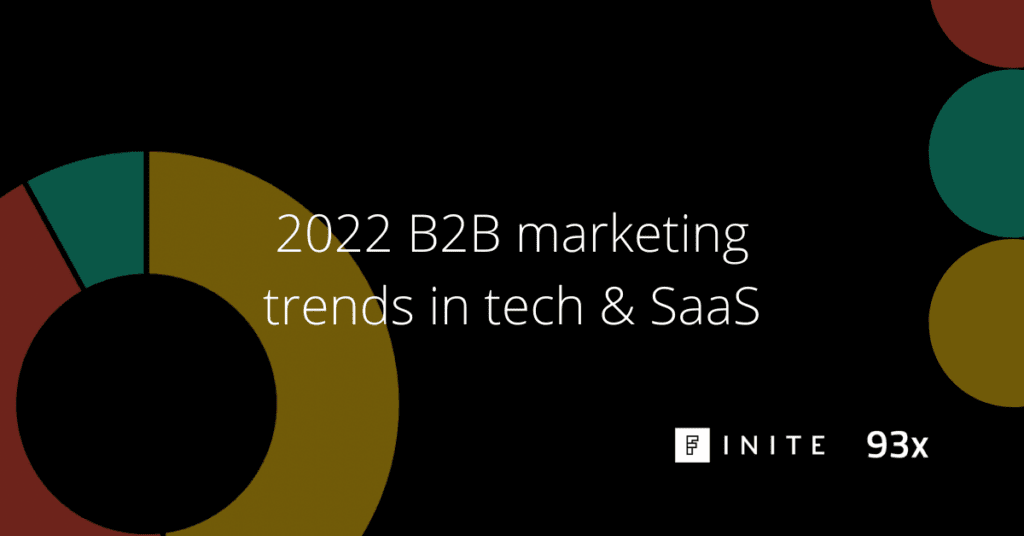How long does a B2B website design project take?

One of the questions we often get asked early on in discussions with clients is, “how long will it take to deliver my B2B website project?”
As a rough guide, a web project can take a total of 10-16 weeks to complete, but this is this is very much dependent on each client’s needs and requirements, so it may take longer. Thinking and planning ahead before you even approach a supplier is essential to figuring out how long your specific website project will take.
Despite varying lengths, all B2B website projects tend to share a common goal: To make a strong first impression that will help B2B businesses land more clients and grow.
In many cases, the first true touch point or interaction from a B2B prospect will be through a business’s website, so dedicating sufficient time and resources to producing an effective website is essential for B2B companies.
At 93digital, we approach website projects in distinct stages. These stages can each take multiple weeks to complete, and vary depending on client requirements, budget and expectations.
Some of the key stages and considerations of our website projects are outlined below, so you can gain a better understanding of how long your B2B website project will take.
Stage 1: Client Pre-planning
Before we kick off projects with clients, it’s always extremely beneficial for a client to do some planning ahead. A website project can be very time intensive, so clients need to devote sufficient time and resources. There are a number of things to consider before the project even kicks off:
- Strategy: Align your overall business objectives and marketing strategy to ensure there is consistency across all communication and marketing channels.
- Website goals: In a collaborative effort, decide what you want to accomplish with your new website by setting some goals and KPIs. You should ensure relevant teams/departments are involved in these discussions, such as marketing and sales.
- Content: This is critical to a great B2B website, and it can take just as long to craft as the design itself. Many marketers underestimate how much time it will take to develop a strong content strategy and write compelling copy that will resonate with website visitors.
- Speak to your clients: It can often be overlooked, but getting a sense of what your prospective and existing clients/users need from your new website is key to reaching your wider business objectives. This feedback should feed into the requirements of the new site.
Stage 2: Discovery and Definition
The Discovery and Definition stage is a key phase of any website project and shouldn’t be skipped over. It may be tempting to think this stage can be overlooked if there are time and/or budget constraints. However, this stage is key to really understanding the client’s requirements and also user needs and journeys.
This stage is primarily focused on knowledge transfer and a shared understanding between the client and 93digital. It’s always easier (and quicker) to change things early on a sheet of paper than once a site is built.
Another important aspect of this stage is that this is an opportunity to validate budgets. If the budget is pre-set then the discovery will look to pin down the ‘Must Haves’, so the scope can be contained and a ‘Design and Build’ Statement of Work approved.
Again depending on the size and complexity of the project scope/requirements – this stage can vary in the length of time to complete, but in general, we are talking weeks (not days) to undertake a meaningful discovery and definition.
Stage 3: Design and Build
This is the stage that most clients would ideally like to skip straight to as it brings to life what the new site could potentially look and feel like through mock-ups of key pages. Finally, and of course, the new site needs to be built by a team of specialist developers.
A key element of this stage of the project is content/copywriting. The sooner clients consider what copy is needed and who will be writing this copy, the more smoothly projects will run. Content is critical to a great B2B website and can take just as long to craft as the design itself.
Many marketers underestimate the time that is involved to develop a strong content strategy and craft compelling copy that will resonate with website visitors. It’s counter-productive to slap copy together since it is central to conveying the right messaging. A website project should include content creation in the design and build stages because this content will impact the overall look and feel of the website itself.
Within this stage of the project is web development: the coding process of taking the design of the website and translating it. The development team at 93digital follow best practices for coding to improve page speed (load time), image rendering, and functionality. This will ensure the website provides the end user with a seamless experience.
Overall, the Design and Build phase of a website project can take many weeks to complete. Again, without sounding like a broken record… each client and project is unique and the amount of time needed to complete this stage can vary.
Final Thoughts
Building a new website is hard work, and not just for the agency you’ve hired. There are certain things that only you can do as a client; gathering content, reviewing deliverables, providing feedback, answering questions. Seldom does it happen that a client is looking for a website when they’re not busy.
Taking the time to respond and provide the necessary input for your project isn’t always convenient, but it’s essential if you want to launch an amazing website that supports your business to grow and thrive.

B2B marketing trends and challenges in 2022

Internal day: January 2022
Let's Talk
Do you have a web design and build project coming up that you would like to talk about?